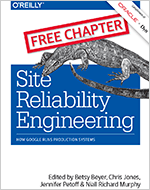It's time to rebuild the web
|
| The web was never supposed to be a few walled gardens of concentrated content owned by Facebook, YouTube, Twitter, and a handful of other major platforms; it was supposed to be a cacophony of different sites and voices. Mike Loukides says we need to start thinking about rebuilding the web.
|
The Stack Overflow age
|
| A lot has happened since Joel Spolsky was writing all those blog posts about Aeron chairs 18 years ago. As he observes, some of those blog posts are old enough to go to college. With Stack Overflow on the verge of turning ten years old, Joel and team are just a few weeks away from launching Stack Overflow Teams, the biggest upgrade to Stack Overflow ever. More on that soon, but for now, Joel wants to talk about what it was like for developers before Stack Overflow, the problem that Stack Overflow tried to solve, and early origins.
|
Awesome macOS open source applications
|
| This list contains both native and cross-platform apps. The main goal of this repository is to find open source and free apps and start contributing. Check it out.
|
Drill deep into today's hottest subjects at OSCON
|
 OSCON is returning to Portland, OR. Come to improve your command of a language, get exposure to new technologies, or absorb tips to enhance your productivity. In addition to keynotes and sessions, OSCON offers expert-led half-day tutorials. From TensorFlow to Redux, take a deep dive into today's hottest subjects—with over 30 tutorials to choose from, there's something for everyone. Register now for Early Price savings. OSCON is returning to Portland, OR. Come to improve your command of a language, get exposure to new technologies, or absorb tips to enhance your productivity. In addition to keynotes and sessions, OSCON offers expert-led half-day tutorials. From TensorFlow to Redux, take a deep dive into today's hottest subjects—with over 30 tutorials to choose from, there's something for everyone. Register now for Early Price savings.
|
Computer system transcribes words users "speak silently"
|
| MIT researchers developed a system for transcribing words a person verbalizes internally. The AlterEgo headset uses electrodes to detect neuromuscular signals in the face, then a machine-learning system interprets the signals, which are associated with words.
|
|
IN COLLABORATION WITH ORACLE DYN
Free chapter: Load Balancing at the Frontend
|
 Even if you had a supercomputer that was somehow able to handle all the requests coming in to your sites and applications, you still wouldn't want to employ a strategy that relied upon a single point of failure. When you're dealing with large-scale systems, putting all your eggs into one basket is a recipe for disaster. Even if you had a supercomputer that was somehow able to handle all the requests coming in to your sites and applications, you still wouldn't want to employ a strategy that relied upon a single point of failure. When you're dealing with large-scale systems, putting all your eggs into one basket is a recipe for disaster.
Chapter 19 from the bestselling Site Reliability Engineering focuses on high-level load balancing—how to balance user traffic between datacenters. It zooms in to explain how to implement load balancing inside a datacenter. This chapter is yours for free, compliments of Oracle Dyn.
|
Find the Linux distribution that's best for you
|
| The landscape of Linux is vast and varied. And, if you're considering migrating to the open source platform or just thinking about trying a new distribution, you'll find a world of possibilities. If you're brand new to Linux, check out this list of distributions that work right out of the box.
|
Jupyter Pop-up DC is happening May 15
|
Join us at Jupyter Pop-up DC, a day-long exploration of Jupyter's best practices, time-saving tips and shortcuts, and practical use cases in business and industry. Hosted by Numfocus Foundation and O'Reilly, Jupyter Pop-up will show you how teams of data scientists, business analysts, and researchers use the Notebook and other Jupyter tools to solve "last mile" issues of communicating data to management, create self-documenting and future-friendly apps and widgets, and streamline your workflow. Early Price ends April 27. Reserve your place now.

|
IFTTT: bringing new meaning to applets
|
| If you've been in the software development industry for some time, you may have heard of the term applets—or more specifically, Java applets. Today, IFTTT, also known as If This Then That, is bringing new meaning to the term with the aim of helping users and developers to do more with their apps and devices.
|
|
IN COLLABORATION WITH MESOSPHERE
Free ebook: Designing Fast Data Application Architectures
|
 Data is the greatest asset companies have today, but only has value if you can use it effectively. In Designing Fast Data Application Architectures (39 pages), authors Gerard Maas, Stavros Kontopoulos, and Sean Glover identify the key characteristics of fast data architectures, separate them into functional blocks, and show you how to implement those functions using components like those in the SMACK stack—including Spark, Mesos, Akka, Cassandra, Kafka, and others. Data is the greatest asset companies have today, but only has value if you can use it effectively. In Designing Fast Data Application Architectures (39 pages), authors Gerard Maas, Stavros Kontopoulos, and Sean Glover identify the key characteristics of fast data architectures, separate them into functional blocks, and show you how to implement those functions using components like those in the SMACK stack—including Spark, Mesos, Akka, Cassandra, Kafka, and others.
This practical, concise ebook shows you how to choose, combine, and run data services to build the resilient, scalable, and responsive architectures that your fast data applications require. It's yours for free, compliments of Mesosphere.
|
Micronaut: A lightweight framework that supports Java, Groovy and Kotlin
|
| Looking for a new full-stack framework? Micronaut is a project brought to you by the Grails team focusing on modularity, minimal memory footprint, and a rocket-fast startup speed. Details here.
|
You're invited to speak at Ignite San Jose
|
 O'Reilly Ignite San Jose will be held Tuesday, June 12 at 5:00pm and will be open to all Fluent and Velocity conference attendees. Share your interesting or inspiring story from technology to culture to business to philosophy—but make it quick! You'll have just 20 slides, 15 seconds each, 5 minutes total. If you want to participate, submit your proposal by 11:59pm PDT on May 9. O'Reilly Ignite San Jose will be held Tuesday, June 12 at 5:00pm and will be open to all Fluent and Velocity conference attendees. Share your interesting or inspiring story from technology to culture to business to philosophy—but make it quick! You'll have just 20 slides, 15 seconds each, 5 minutes total. If you want to participate, submit your proposal by 11:59pm PDT on May 9.
|
tail -f /dev/newsletter
|
You can now build the 1990s Microsoft Windows "File Manager" app for Windows 10. But why? Because you can!

|